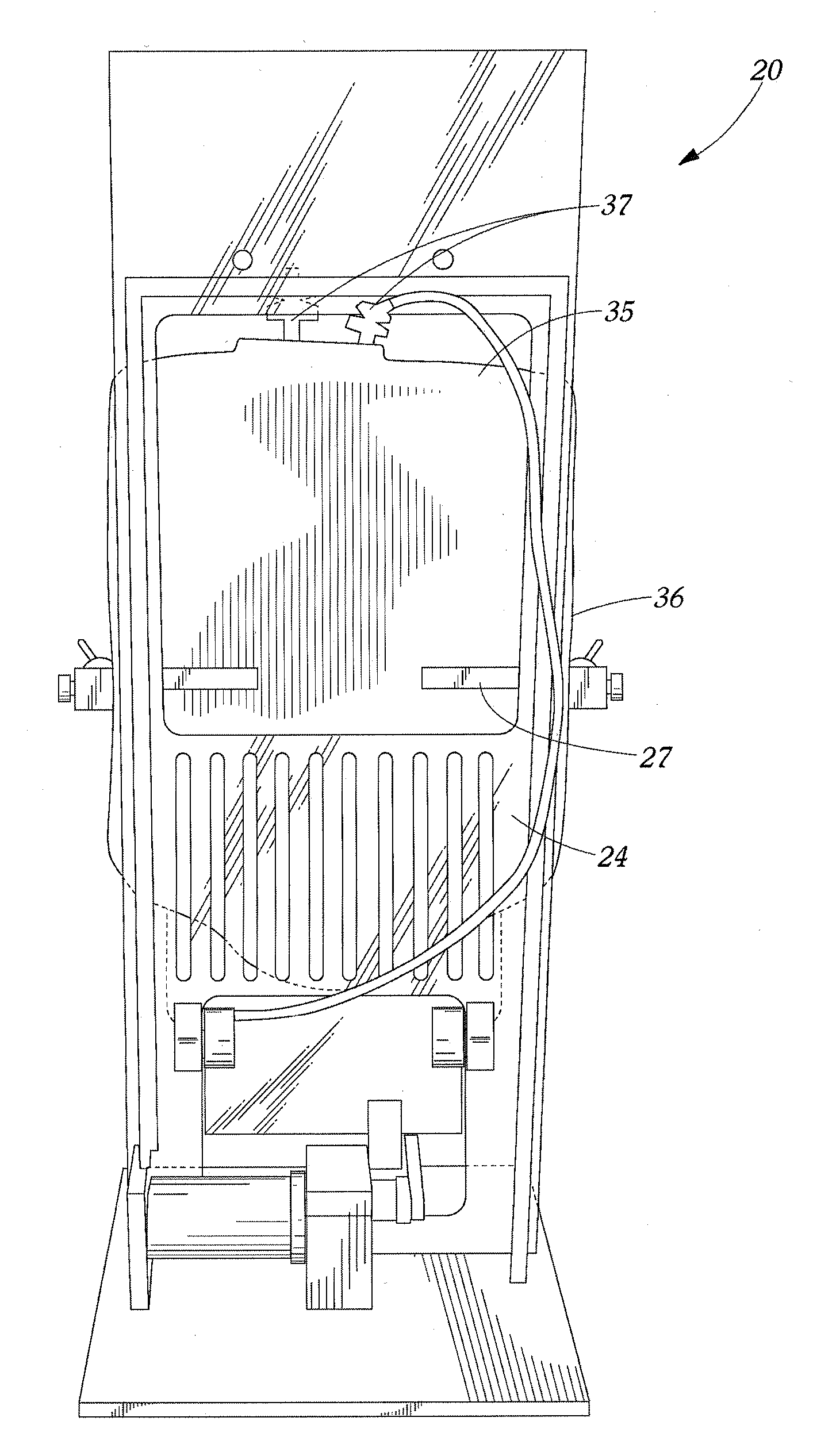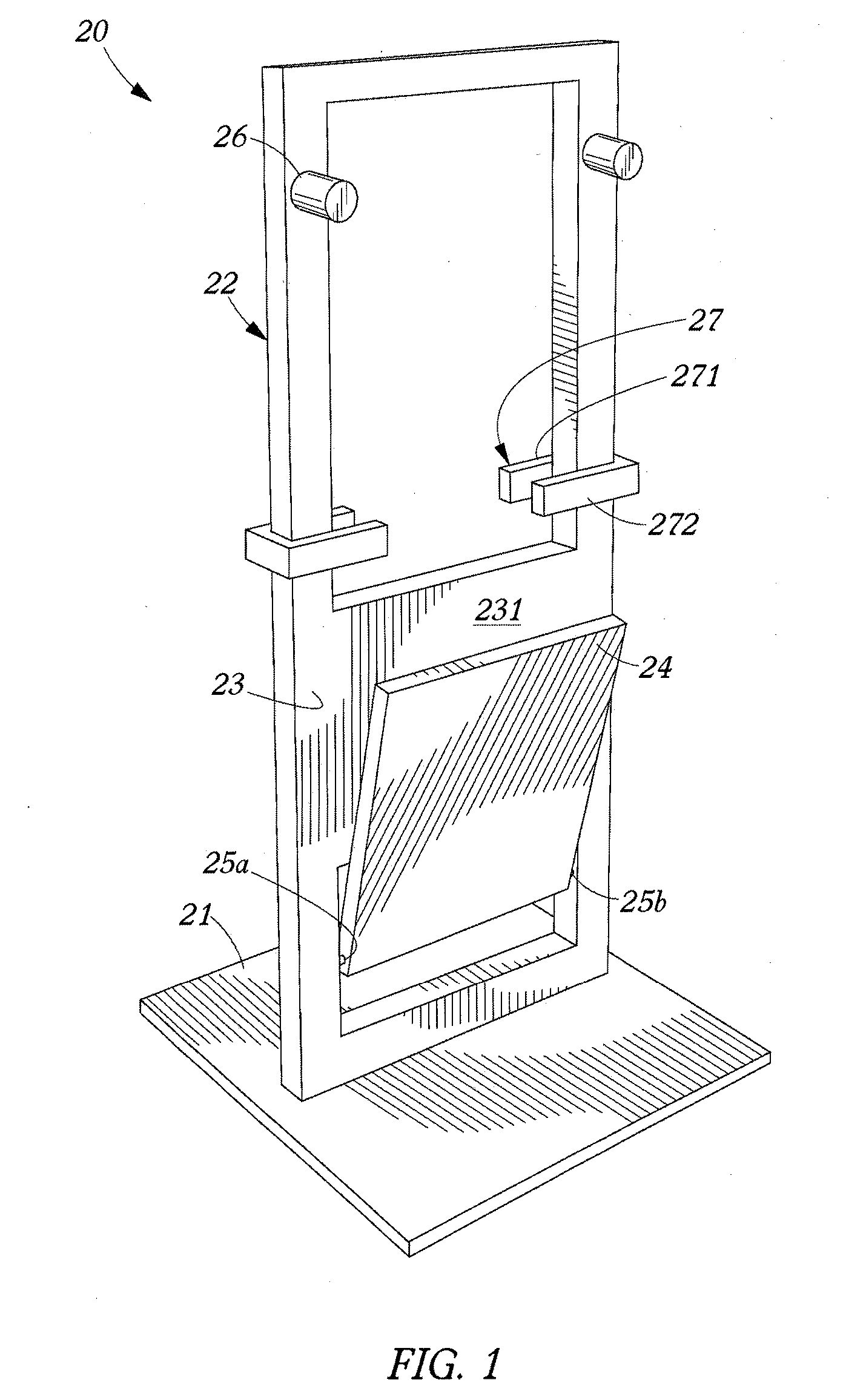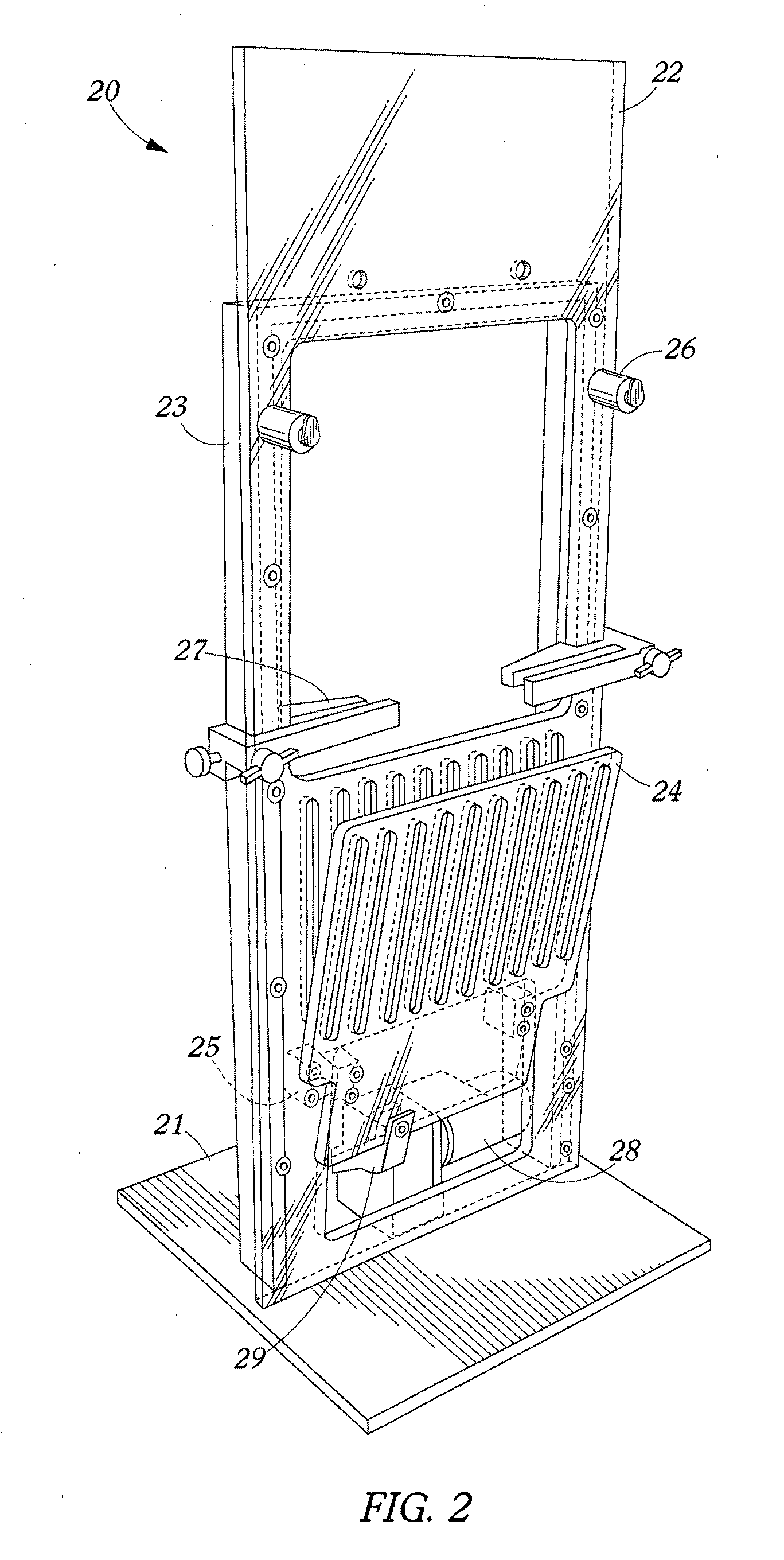Container or bag mixing apparatuses and/or methods
a technology of mixing apparatus and container, which is applied in the direction of transportation and packaging, rotary stirring mixer, and other blood circulation devices, can solve the problems of affecting the safety of patients receiving blood or blood components via blood transfusion, affecting the safety of patients, and disrupting the replication of nucleic acids, etc., to achieve enhanced photoinactivation, enhance mixing, and enhance the effect of bag contents
- Summary
- Abstract
- Description
- Claims
- Application Information
AI Technical Summary
Benefits of technology
Problems solved by technology
Method used
Image
Examples
Embodiment Construction
[0047]FIG. 1 shows a blood or blood component mixing system 20 for mixing blood components in accordance with the present invention. Whole blood is withdrawn from a donor / patient (not shown) and may be treated in whole blood form by the present invention, or it may be provided to an apheresis system or other type of blood component separation device (not shown) often of a centrifugal type, where the blood may be separated into one or more of various component types and at least one of these blood component types can then be removed / collected as a product from the separation device. The blood or blood component products (e.g., platelets, plasma, white blood cells, or red blood cells) may then be pathogen reduced either continuously in a flow-through manner within or adjacent the apheresis machine (not shown) or in a separate batchwise step. Ultimately, the pathogen reduced blood components may then be stored for later transfusion into a patient.
[0048] The system 20 shown generally i...
PUM
| Property | Measurement | Unit |
|---|---|---|
| energy | aaaaa | aaaaa |
| wavelength | aaaaa | aaaaa |
| wavelengths | aaaaa | aaaaa |
Abstract
Description
Claims
Application Information
 Login to View More
Login to View More - R&D
- Intellectual Property
- Life Sciences
- Materials
- Tech Scout
- Unparalleled Data Quality
- Higher Quality Content
- 60% Fewer Hallucinations
Browse by: Latest US Patents, China's latest patents, Technical Efficacy Thesaurus, Application Domain, Technology Topic, Popular Technical Reports.
© 2025 PatSnap. All rights reserved.Legal|Privacy policy|Modern Slavery Act Transparency Statement|Sitemap|About US| Contact US: help@patsnap.com



